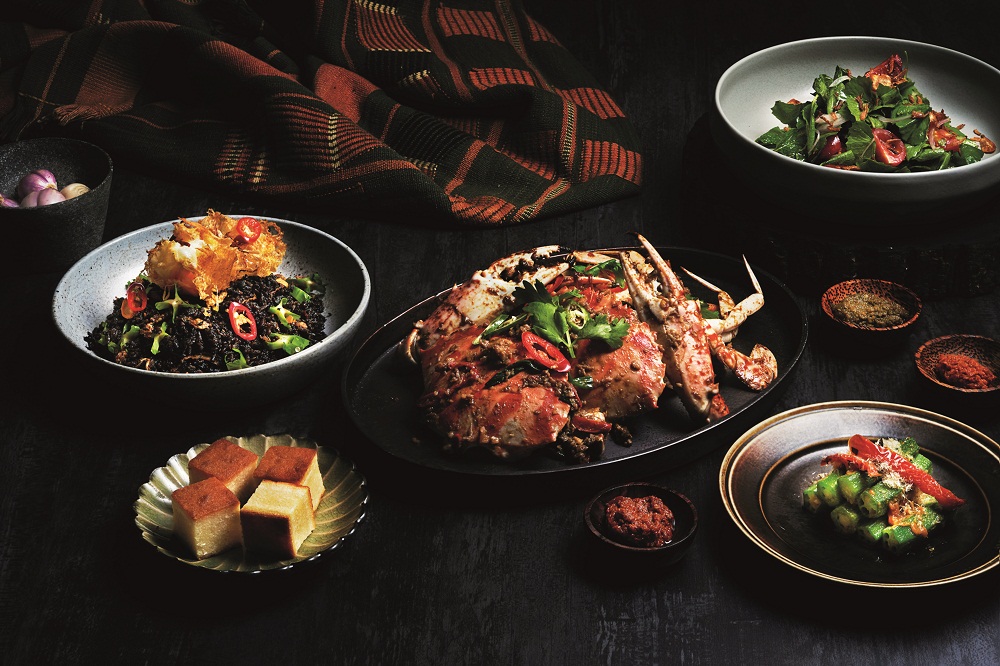For head chef Damian D’Silva, heritage cuisine is everything. He shares with Destin Tay on its personal significance to him, and pays tribute to the generations of mothers who’ve made it possible.
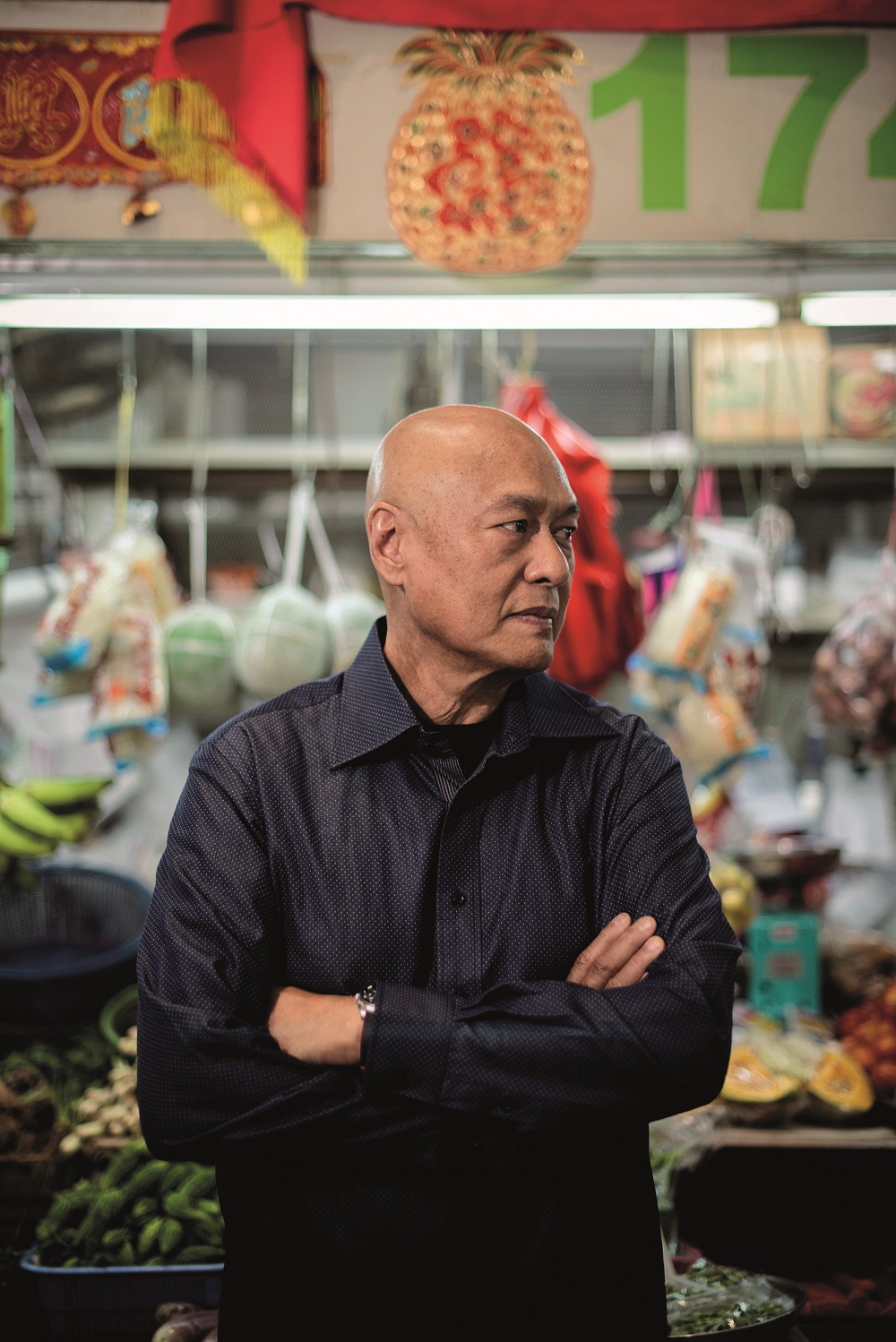
Damian D’Silva is a chef that barely needs an introduction at this point. The 64-year-old has often been touted as Singapore’s premier expert on heritage cuisine, counting Peranakan, Chinese, Malay, Indian and Eurasian dishes among his wealth of expertise. He has certainly shown his passion in the past 14 years of his life, cooking in a multitude of restaurants and even appearing as a judge on MasterChef Singapore.
His latest restaurant is no exception. Kin, opened in partnership with The Lo & Behold Group in the lobby of Straits Clan, is unabashedly local. The dining room, plush and sleek in browns and emerald green accents, lies within the 1970s inspired conservation building. The setting may be modern, but the menu is decidedly historic. D’Silva’s menu is carefully curated, consisting of time-honoured recipes and cooking methods that have been forgotten over time – a retrospective look at the origins of Singapore’s food culture.
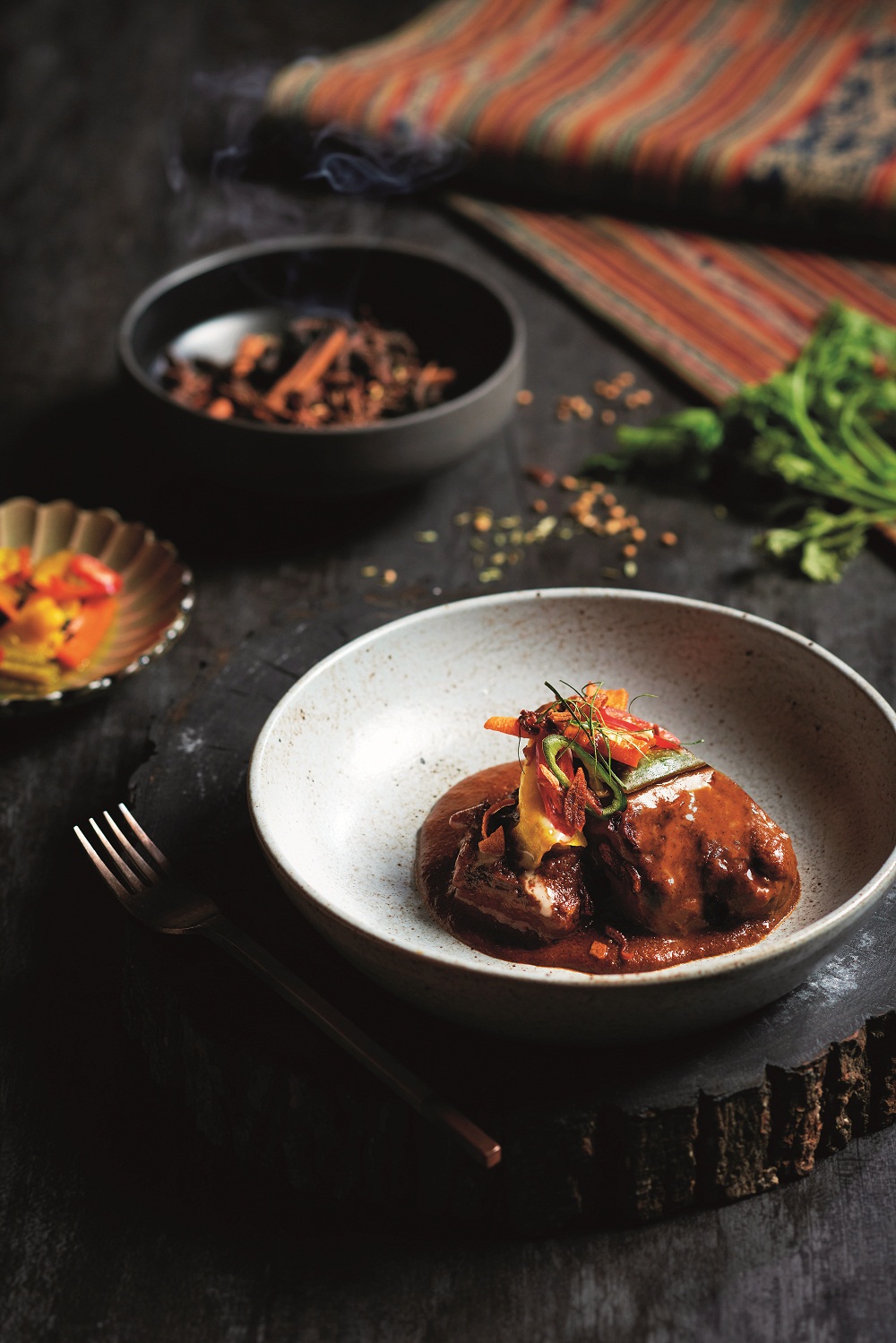
D’Silva approaches these heritage dishes with a sort of reverence, set on preserving as much of their original form in order to acknowledge the ones that’ve come before. He offers a chance for modern diners to recognise and rediscover their cultural roots through food, in a way that’s both approachable and authentic.
When you first set up Kin, what did you want the dining experience to be like?
It’s my life goal for people to understand that Singaporean food is unconstrained by cultural or racial identities, but a true culinary amalgamation of traditions brought over by foreign cultures. I want diners to be able to be drawn in by the experience that Kin offers, so they may be properly acquainted with the depth and breadth of flavours and textures available to us.
Tell me about your mindset when it comes to menu planning. How do you find balance, when heritage cuisine has such a strong flavour profile?
Again, this is where being knowledgeable about the wide variety of heritage dishes comes in handy. It is true that a lot of these dishes feature rich and robust gravies and stews as the star, and are the ones that are more widely known by the public, such as Babi Masak Assam or Ayam Lemak Chilli Padi. We intentionally balance the menu with often overlooked and under appreciated lighter, refreshing and vegetable-forward heritage specialities. These include Daun Pegaga, a slightly bitter Asian pennywort salad, and Nasi Ulam, a personal favourite of mine. The latter’s complex flavour profile of indigenous herbs, like kaffir lime leaf, turmeric leaf, daun melinjo, sand ginger leaf and lemongrass helps to lift the palate.
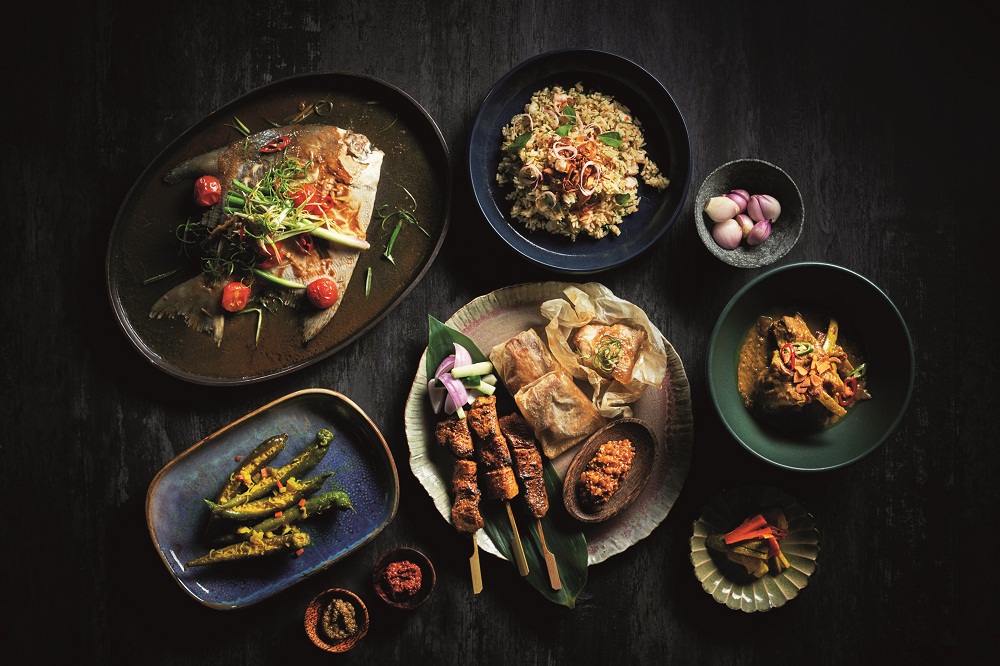
Almost 80 percent of your menu consists of dishes that can’t be found elsewhere. Are you afraid that the unfamiliarity may put some diners off?
I think the wide range of what we have assures that there will be at least one or two items that diners will be familiar with. We’ve got everything form Cantonese Chi Pow Kai, Indian-Indonesian Gulai, and Javanese Keredok, all served family style. Diversity is what makes our culinary identity truly unique. I went through multiple rounds of internal tastings to shortlist a selection of the more wondrous, rare, and quickly-vanishing recipes for us to revive. I think if anything, it’s exciting for the diners.
Was your decision to go for a family-style service mainly because of the nature of the food that you cook?
It’s only natural to have Singaporean food in such a manner, but it has a more personal meaning to me as well. As a child, communal dining was an important aspect of my family life. We always made it a point to come together to have a meal and spend time together. It’s sad that what was once the norm has now become something that is usually reserved for special occasions like birthdays or celebrations, as we as a society become busier and more detached from one another.
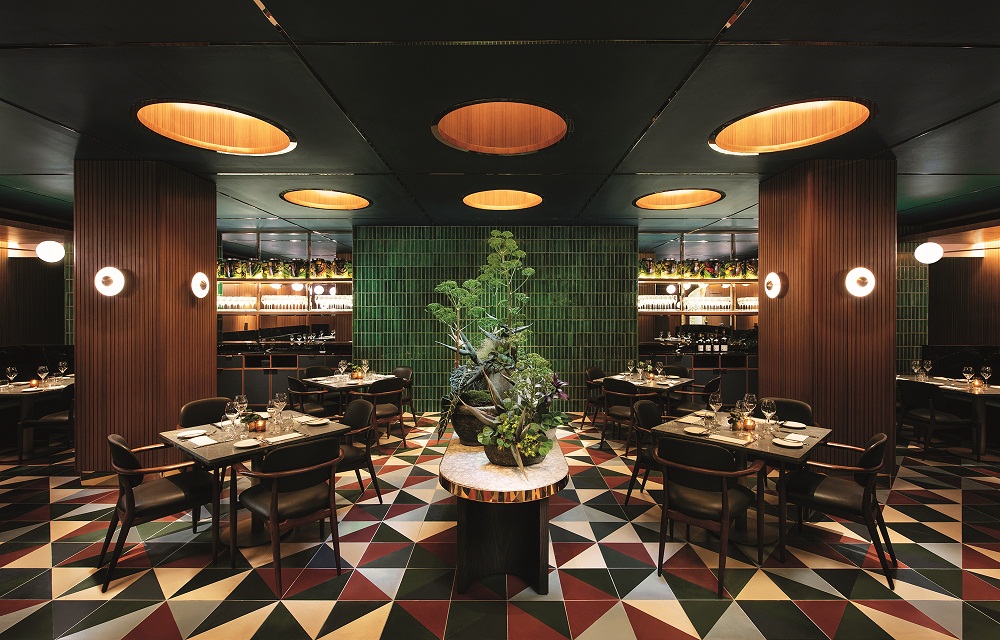
Speaking of growing up, how were you influenced by your upbringing?
As a Eurasian and someone who loves family gatherings, I’m blessed that I get to celebrate Hari Raya, Christmas and Chinese New Year. My grandparents were of different ethnicities, but my grandfather always taught me to appreciate and understand my culinary heritage. When it was time to celebrate, they always went the extra mile. They would take the time to prepare a bountiful feast with dishes like Hati Babi Bungkus or Feng, which were special and only reserved for those occasions. Our house would be opened up to relatives, friends and the entire neighbourhood. As boisterous as it may be, these moments and the dishes served will always hold a special place in my heart – I still feel excited when I recreate them at Kin.
By nature of its name, heritage cuisine has to be passed down from earlier generations. How were they passed down to you?
I spent plenty of time in the kitchen with my grandparents initially, but it was more of a backseat role. My grandma especially, only ever allowed me to watch and learn. It came from a place of passion and soul, and watching them devote all their time to the food that they were making has influenced the way I cook. It’s why I have my granddad’s perfectionist tendencies and grandma’s stubbornness. While my grandparents were more like mentors, my mum was essentially my partner in the kitchen and would allow me to be more hands-on. She’s a great cook herself, and during the occasional Chinese New Year, granddad would let her helm the kitchen. As he trusted her and her culinary skill, she trusted in mine. In my early 20s, we began to cook a lot more regularly with each other, and we formed a special bond between us, learning and growing together. I’ve also learnt a lot from numerous other mothers and cooks that I have met along my culinary journey, and I have to credit them for all the recipes that I know.
Is that why you choose to stick with heritage food preparation as well?
The preparation involved for heritage cuisine can be very precise and sometimes delicate, which makes it difficult to replicate with newer kitchen appliances. I am a strong advocate for following traditional techniques. That being said, that doesn’t mean that I have banned modern appliances in my kitchen; they can certainly be used to ease the process. But, when you understand how things are done traditionally, only then can you understand how to achieve the same results with modern tools. Some techniques, however, still require a slower touch. For instance, we freshly grate tapioca, freshly squeeze coconut, and grind our own spice blends for rempah. It’s laborious, sometimes taking over three to four days, but it is well worth the effort. When you work with fresh ingredients, like the ones we handpick daily from artisanal markets and local suppliers, you have to give it that respect. When you put your heart and soul into the food that you are making, it really shines through in the end product. It’s what makes it unforgettable.
What then, are unforgettable dishes for you, personally?
Ayam Tempra and Aberjaw. The former is my grandma’s speciality of braised Kampong chicken, soya sauce, sweet onion, chilli and lime. It’s my “happy meal”, a comforting classic that I always look forward to when visiting her. The latter on the other hand is my grandfather’s; a pork stew made from fermented beans, bottle gourd and traditional spices that’s almost impossible to find outside of households.
How has the response for Kin been so far?
It’s been incredibly rewarding; to see what is a personal mission of mine been so well received, makes me confident that we can indeed preserve Singapore’s culinary heritage for generations to come. I’ve had a steady stream of regulars and guests from all walks of life coming to Kin to experience our heritage cooking. I can only hope that this continues and we can further celebrate our cultural identity for more international clientele as well. Beyond that, I was very blessed that my mum could try what we were trying to accomplish at Kin so far, and her response has been a source of validation. The kuehs that we serve at Kin were passed down to me from my grandma and auntie, Kueh Kosui and Kueh Bengkah respectively. My mum told me that my kuehs were her favourite version; while I can’t comment on any preferential bias, but for that to come from someone you look up to immensely, it has to be one of my proudest moments.
